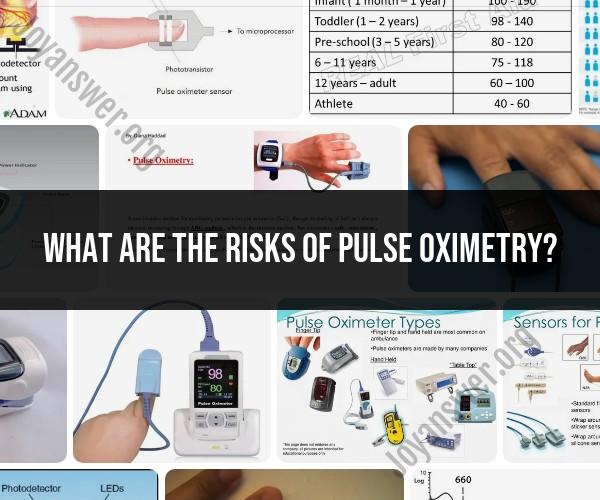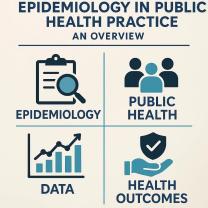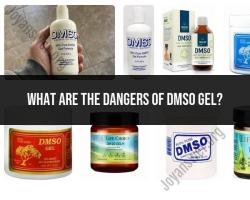What are the risks of pulse oximetry?
Pulse oximetry is a widely used and generally safe medical technique for measuring a person's oxygen saturation level (SpO2) and pulse rate. However, like any medical procedure or device, it does carry some potential risks and limitations. It's important to be aware of these risks while also recognizing that the benefits of pulse oximetry typically outweigh them. Here are the potential risks associated with pulse oximetry:
Inaccurate Readings: Pulse oximeters may provide inaccurate readings under certain conditions. Factors such as poor circulation, cold extremities, nail polish, dirty sensors, and excessive motion can affect accuracy. Inaccurate readings could lead to incorrect medical decisions.
False Alarms: In some cases, pulse oximeters may trigger false alarms, indicating low oxygen levels when the patient is actually fine. This can cause unnecessary stress and interventions.
Over-Reliance on SpO2: Over-reliance on oxygen saturation readings without considering other clinical factors can be risky. A low SpO2 reading should be interpreted in the context of the patient's overall condition, medical history, and other vital signs.
Delay in Seeking Medical Care: Relying solely on a home pulse oximeter may cause individuals to delay seeking medical attention when they experience symptoms of a serious medical condition, such as respiratory distress or heart problems.
Motion Artifacts: Patient movement or shaking can lead to artifacts in the pulse oximeter reading, resulting in inaccurate data. This is particularly relevant in situations where patients are unable to remain still, such as during surgeries or when monitoring infants.
Skin Irritation: Prolonged use of adhesive sensors or finger clips may cause skin irritation or pressure sores, especially in patients with sensitive skin or poor circulation.
Allergies: Some individuals may be allergic to the materials used in the adhesive sensors or the rubber used in finger clips. This can lead to skin rashes or discomfort.
Privacy Concerns: In certain settings, such as hospitals or healthcare facilities, there may be privacy concerns related to the data collected through pulse oximetry devices. Patient data should be handled securely and in compliance with healthcare privacy regulations.
Infection Risk: In healthcare settings, reusable sensors can potentially transmit infections if not properly cleaned and disinfected between patients.
Despite these risks, pulse oximetry remains a valuable tool in monitoring and assessing patients' respiratory and cardiovascular health, especially in cases of respiratory diseases like COVID-19, chronic obstructive pulmonary disease (COPD), and asthma. Healthcare professionals are trained to use pulse oximetry in conjunction with other clinical assessments to make informed decisions about patient care. When using pulse oximeters at home, individuals should follow the manufacturer's instructions carefully and consult with healthcare professionals if they have concerns about their readings or health status.
Risks Associated with Pulse Oximetry: What to Be Aware Of
Pulse oximetry is a non-invasive method used to measure the amount of oxygen in the blood. It is a relatively safe procedure, but there are some risks associated with it, such as:
- Inaccuracy: Pulse oximeters may not be accurate in all cases, especially in people with certain conditions such as dark skin pigmentation, poor circulation, or low hemoglobin levels.
- Skin irritation: The adhesive used to attach the pulse oximeter probe to the skin may cause irritation, especially in people with sensitive skin.
- Pressure sores: If the pulse oximeter probe is too tight or is left on for too long, it can cause a pressure sore.
Understanding the Limitations: Potential Dangers of Pulse Oximetry
It is important to understand the limitations of pulse oximetry. Pulse oximeters measure only the amount of oxygen in the blood, not the amount of oxygen that is being delivered to the tissues. This means that a person with a normal pulse oximeter reading may still be experiencing hypoxia (low oxygen levels) in the tissues.
Additionally, pulse oximeters may not be able to detect hypoxia in people with certain conditions, such as carbon monoxide poisoning or methemoglobinemia.
The Balance of Benefits and Risks: Pulse Oximetry Considerations
Pulse oximetry is a valuable tool for monitoring oxygen levels in the blood. However, it is important to be aware of the risks and limitations of this procedure.
If you are considering using pulse oximetry to monitor your own or someone else's oxygen levels, talk to your doctor or other healthcare professional. They can help you to understand the risks and limitations of pulse oximetry and to determine if it is the right procedure for you.
Here are some additional things to keep in mind about pulse oximetry:
- Pulse oximetry is not a substitute for other forms of medical monitoring, such as arterial blood gas (ABG) analysis.
- Pulse oximetry should not be used to diagnose or treat any medical condition.
- If you have any concerns about your oxygen levels, talk to your doctor or other healthcare professional.













